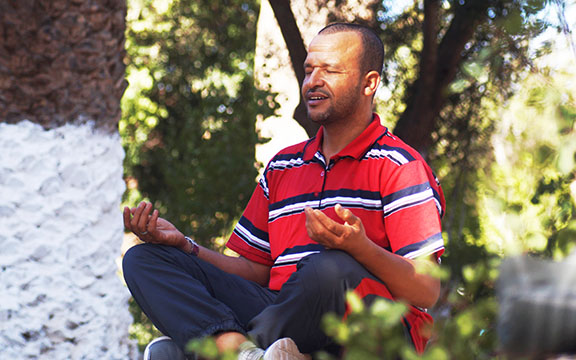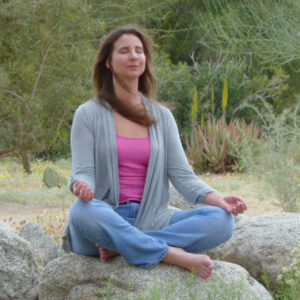
(Photo by Abdrahim Oulfakir on Unsplash)
A common scenario I see is people who started a meditation practice, found it beneficial, and then for whatever reason they stop. When they try to return to a daily practice, they hit resistance. They ask: I know I feel great when I meditate, but why can’t I get myself to do it? When we commit to a meditation practice, old layers of self shed, and we become something new. We enter an unknown world which causes us shift and change in sometimes unexpected and surprising ways.
There’s a part of us, sometimes called the critter brain, which craves continuity. This part of the ego will keep us stuck in painful patterns because they are familiar. To the critter brain, all that matters is survival. When faced with anything new and unknown, it will always choose the perceived safety of our current state of being. Even if we are completely miserable, the ego will throw up roadblocks to stop us from exploring the unknown.
We could try to use our will power to force ourselves to sit, but sooner or later, this method ends in failure. In order to truly overcome resistance, we need to accommodate our ego’s need for security. Initially this is about addressing the critter brain’s concerns. Eventually, we discover the Presence that is always here, beyond the turbulent waves of our mind and the world. In order to develop that awareness, we first must move past the struggle. We can make this process easier and commit to meditation by asking ourselves some questions:
Is your meditation area and seat comfortable?
If your meditation seat is not comfortable, and especially if you experience increased pain when you sit, your brain will protect the body and distract you from sitting. In a similar way, if your meditation looks more like a storage area than a sacred space, your ego will want to organize. It will look for ways to tame all the items surrounding you. If you don’t have a place to put these things and you’re not ready to let them go, the ego will react. Every time you think about sitting, there will be a low level of anxiety, so naturally it will find other things that it can control for you to focus on instead.
Start by claiming a dedicated meditation area
This might be a corner in a room. Clean it thoroughly and use this space for only meditation. Place a few objects that remind you of your divine nature in the room. Next select a comfortable seat.Some people like sitting on a cushion, while others need more elevation with a chair or folded futon. Experiment with different options, sitting up with your back as straight as possible, until you find the support your body needs. You should be able to sit in a relaxed alert position, without your feet or legs falling asleep.
Is life too busy to fit in time for meditation?
It can be challenging to add a new habit to your life. A good strategy to build a daily practice is by connecting meditation to something you already do every day. Think about your routines and add 5 to 15 minutes of meditation to one of them, like sitting before you brush your teeth or after you get out of the shower. By adding meditation to an already established routine, it will feel like a natural extension instead of something forced.
When you sit, are uncomfortable feelings or thoughts arising?
As we sit on the meditation cushion, we recognize thoughts are passing phenomena. We ignore them and return to our focal point. But if a repressed thought pattern or emotion surfaces, our psyche will try to protect us by stopping us from engaging in the activity that triggers it, in this case meditation. If this happens, carve out some time to contemplate and process what you are experiencing. This might look like sitting with a cup of tea and exploring those thoughts and feelings as you gaze out the window. Others find it helpful to write about them in a private journal. As you contemplate, you are not trying to figure anything out; rather you are looking at what is happening within your mind. By taking the time to see the pattern clearly, a natural release will occur. Your ego will feel safe, and you’ll be able to continue sitting in meditation each day.
About the Author:
 Turiya Jenna Sundell is an applied mindfulness and meditation teacher at www.DharmaCenter.com. She guides students as they deepen their journey of awakening and also writes a weekly blog. (This article reprinted from LA Yoga magazine.)
Turiya Jenna Sundell is an applied mindfulness and meditation teacher at www.DharmaCenter.com. She guides students as they deepen their journey of awakening and also writes a weekly blog. (This article reprinted from LA Yoga magazine.)


